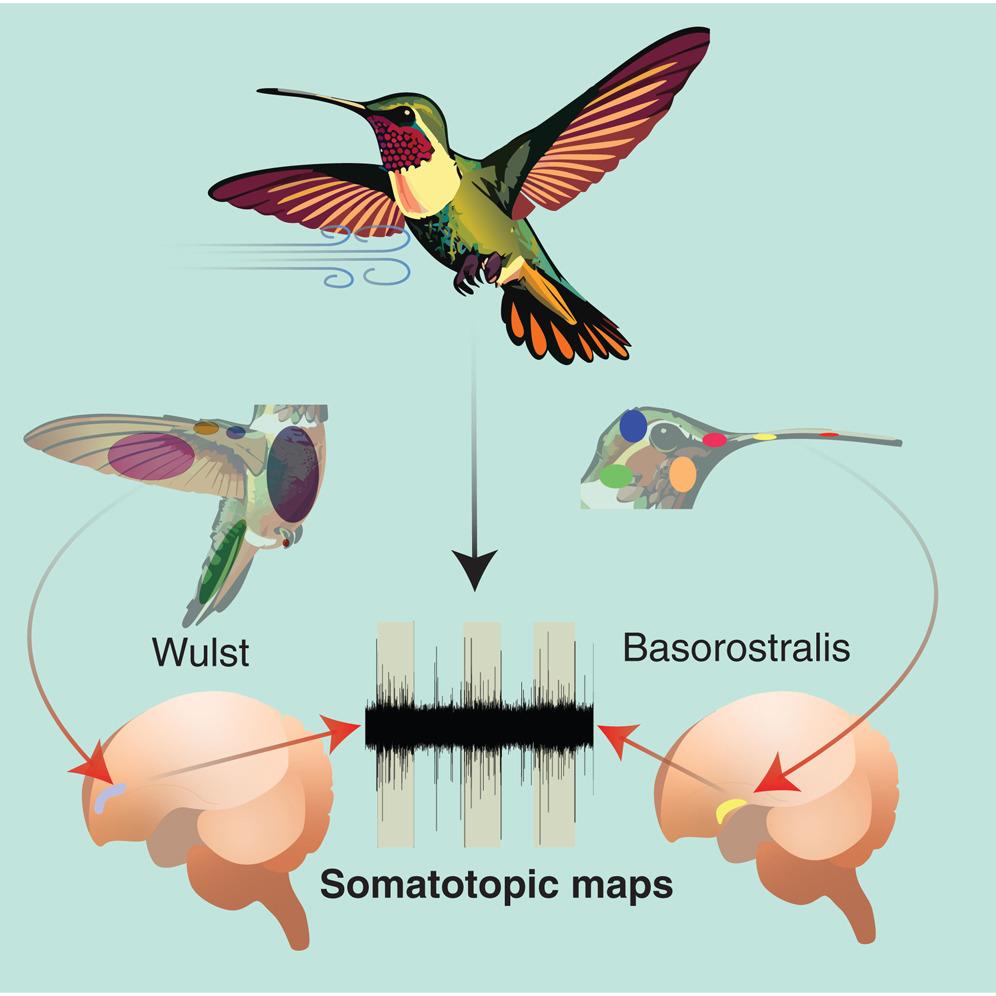
UBC Science, May 29, 2024: Hummingbirds have feelings too: an acute sense of touch that could help them hover
Castanet, May 30, 2024: UBC study uncovers hummingbirds' unique sensory abilities
Summary
Somatosensation is essential for animals to perceive the external world through touch, allowing them to detect physical contact, temperature, pain, and body position. Studies on rodent vibrissae have highlighted the organization and processing in mammalian somatosensory pathways. Comparative research across vertebrates is vital for understanding evolutionary influences and ecological specialization on somatosensory systems. Birds, with their diverse morphologies, sensory abilities, and behaviors, serve as ideal models for investigating the evolution of somatosensation. Prior studies have uncovered tactile-responsive areas within the avian telencephalon, particularly in pigeons, parrots, and finches, but variations in somatosensory maps and responses across avian species are not fully understood. This study aims to explore somatotopic organization and neural coding in the telencephalon of Anna's hummingbirds (Calypte anna) and zebra finches (Taeniopygia guttata) by using in vivo extracellular electrophysiology to record activity in response to controlled tactile stimuli on various body regions. These findings reveal unique representations of body regions across distinct forebrain somatosensory nuclei, indicating significant differences in the extent of areas dedicated to certain body surfaces, which may correlate with their behavioral importance.